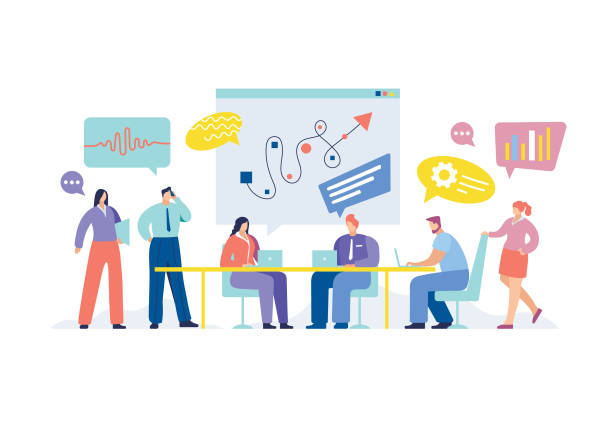Nonprofit organizations play a crucial role in addressing various social issues, from healthcare and education to environmental conservation and poverty alleviation. These organizations rely heavily on donations, grants, and volunteers to support their missions.
To efficiently manage their operations and maximize their impact, many nonprofits are turning to Salesforce, a robust Customer Relationship Management (CRM) platform. In this blog post, we will explore how Salesforce is revolutionizing organizational impact and efficiency for nonprofits.

The Challenges Nonprofits Face
Before diving into the ways Salesforce can help nonprofits, it’s essential to understand the unique challenges these organizations encounter:
1. Limited Resources
Nonprofits often operate on tight budgets, making it challenging to invest in technology and staff training.
2. Data Management
Managing donor information, volunteer records, program data, and other critical information can be overwhelming without a centralized system.
3. Engagement and Donor Retention
Nonprofits need to build and maintain strong relationships with donors and volunteers to ensure ongoing support.
4. Reporting and Compliance
Nonprofits must provide detailed reports to stakeholders, donors, and regulatory bodies to demonstrate transparency and accountability.
Getting Started with Salesforce for Nonprofits
If you’re a nonprofit organization looking to harness the power of Salesforce, here are some steps to get started:
1. Assess Your Needs
Identify your organization’s specific challenges and requirements. Determine which Salesforce modules and features will best address these needs.
2. Set Up Salesforce
Work with Salesforce consultants or experts experienced in nonprofit implementations to set up your CRM platform. Customize it to match your organization’s workflow and data requirements.
3. Train Your Team
Invest in training to ensure that your staff can effectively use Salesforce. Salesforce offers free and paid training resources, including online courses and certifications.
4. Monitor and Optimize
Regularly review your Salesforce setup and usage. Make adjustments as needed to ensure that the CRM continues to support your nonprofit’s goals effectively.
Salesforce Impacts on Nonprofits
1. Enhanced Donor Engagement
One of the most significant impacts Salesforce has on nonprofits is its ability to enhance donor engagement. Nonprofits can segment their donor lists, personalize communication, and track interactions. This results in more targeted and effective fundraising campaigns, leading to increased donations and improved donor retention rates.
2. Improved Program Management
Salesforce allows nonprofits to efficiently manage their programs and track outcomes. By centralizing program data, organizations can measure the impact of their initiatives, identify areas for improvement, and demonstrate results to donors and stakeholders. This transparency fosters trust and long-term support.
3. Streamlined Grant Management
For nonprofits reliant on grants, Salesforce simplifies the grant management process. From grant application tracking to reporting, organizations can manage the entire lifecycle of grants within the platform. This ensures compliance and helps secure critical funding for their missions.
4. Targeted Marketing and Communication
Salesforce’s Marketing Cloud empowers nonprofits to create highly targeted marketing campaigns. By segmenting their audience based on donor behavior and preferences, nonprofits can deliver relevant content through multiple channels, maximizing their outreach and impact.
5. Improved Volunteer Engagement
Volunteers are the lifeblood of many nonprofits. Salesforce enables organizations to manage volunteer data efficiently, match volunteers with the right opportunities, and track their contributions. This leads to increased volunteer satisfaction and retention.
Efficiency Gains for Nonprofits
1. Centralized Data Management
Nonprofits often struggle with scattered donor information and program data. Salesforce centralizes all this data, providing a 360-degree view of every donor, volunteer, and program. This consolidation reduces data entry redundancy and errors, saving time and resources.
2. Automated Workflows
Salesforce’s workflow automation capabilities allow nonprofits to streamline routine tasks and processes. From sending automated thank-you emails to donors to managing membership renewals, these efficiencies free up staff to focus on higher-impact activities.
3. Reporting and Analytics
Salesforce’s reporting and analytics tools simplify the creation of compliance reports and performance metrics. Nonprofits can quickly generate reports for stakeholders, donors, and regulatory bodies, reducing the administrative burden and ensuring transparency.
4. Collaboration and Knowledge Sharing
Salesforce’s Community Cloud enables nonprofits to build online communities for supporters, volunteers, and beneficiaries. These communities facilitate collaboration, knowledge sharing, and engagement, reducing communication barriers and fostering a sense of belonging.
5. Scalability
As nonprofits grow and their needs evolve, Salesforce can scale with them. The platform’s flexibility and customization options mean organizations don’t need to invest in new systems as they expand. This scalability ensures long-term cost savings and efficiency gains.
Conclusion
Salesforce for nonprofits is a game-changer, revolutionizing organizational impact and efficiency in the sector. By centralizing data, streamlining operations, and enhancing engagement and reporting, Salesforce empowers nonprofits to focus on what matters most: making a positive difference in the world. If you’re a nonprofit organization, consider Salesforce as a powerful tool to help you achieve your mission more effectively and efficiently. It’s not just a CRM; it’s a catalyst for change.
SCHEDULE MY CUSTOM CONSULTATION
Want to become a connected nonprofit with the power of Salesforce solution? We’re here to help you. Book an appointment to talk to our Salesforce experts.


